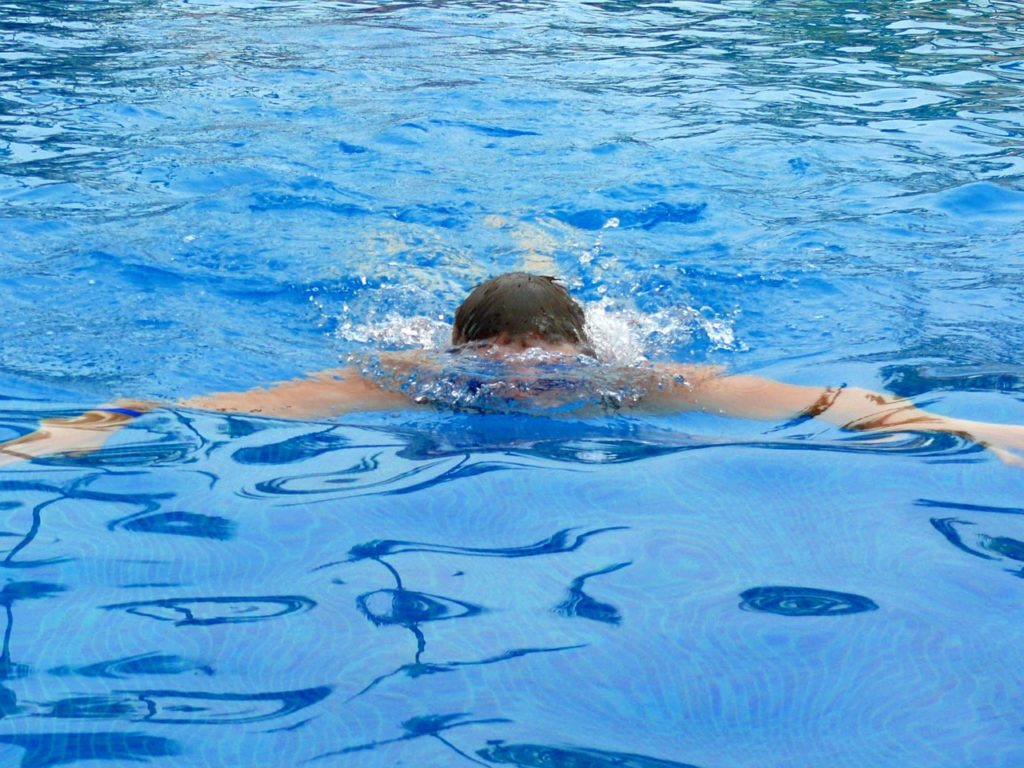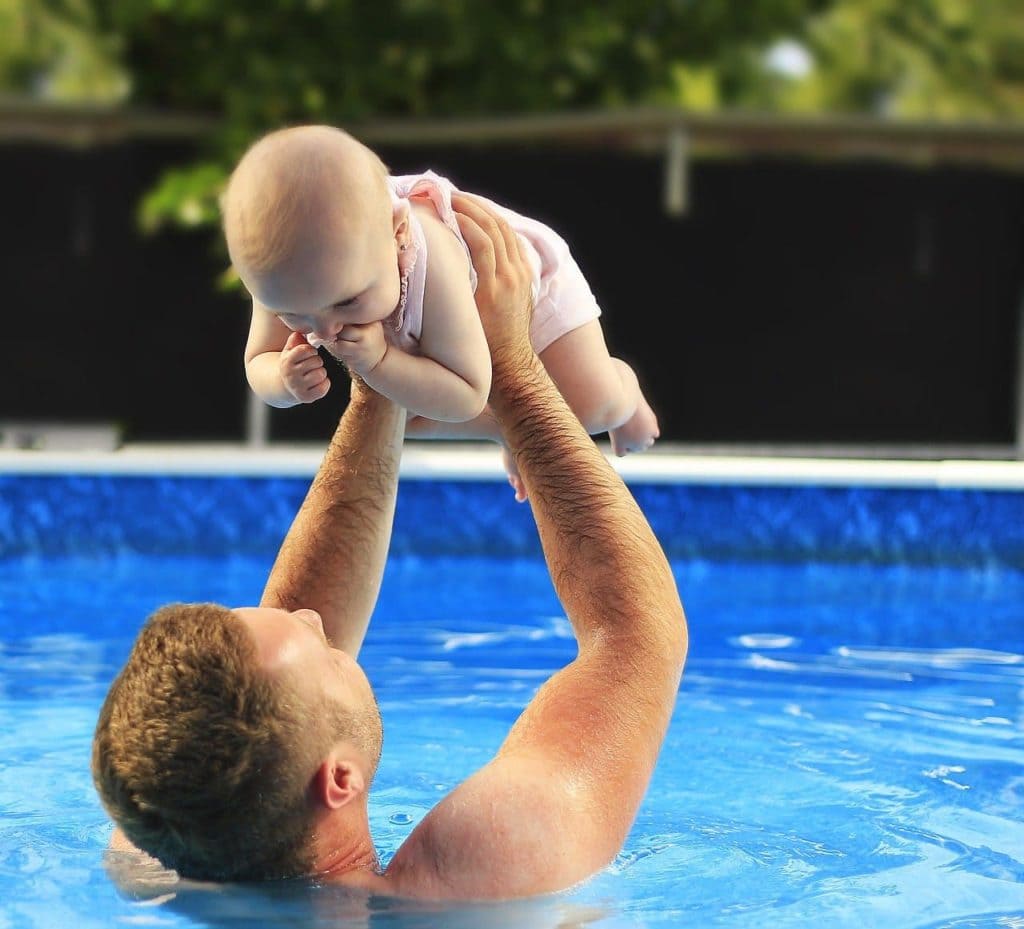What is the Ideal Temperature for a Swimming Pool?
-

- Last updated:


What is the best, ideal temperature for a swimming pool? And the answer is – it depends.
Members of the Coney Island Polar Bear Club on the East Coast would tell you that swimming in ice-cold water is an adrenaline rush. They claim it helps your stamina and improves your circulation. Most people would say no way to that idea. By contrast, people who favor Iceland’s Blue Lagoon think the temperatures there, in the range of 99-102 degrees Fahrenheit are the cat’s meow.
So who’s right and who’s wrong? Both and neither.
Water temperatures, like air temperatures, can have a serious impact on your health, either for good or for ill. It doesn’t take a big swing in either direction to completely change the equation. The activity taking place in the water also factors into it. So let’s take a look.
 Ideal Water Temperatures for Vigorous Activity
Ideal Water Temperatures for Vigorous Activity
Vigorous, sustained activities such as water polo or Olympic swimming competitions can be dangerous if the water is too hot. Water can easily trap your body’s own natural heat inside you if the water is warmer than it should be. This can lead to muscle spasms, which can become fatal because swimmers don’t always realize the over-exertion is taking place. One moment they feel fine, the next, they’re sinking to the bottom, unable to control the spasms in their arms and legs enough to be able to swim.
The swimming world learned this lesson the hard way in 2010 when U.S. National Team swimmer Fran Crippen died during the FINA race in the overly warm seawater in the United Arab Emirates. The winner of the race, Thomas Lurz, and several other swimmers complained of swollen limbs and disorientation because the water was overly warm – 86ºF – during the race, and several swimmers were hospitalized for heat-related symptoms after finishing the race.
Olympic racing and FINA events now mandate a water temperature between 77-82ºF (25-28ºC), although synchronized swimming requires a temperature of 81ºF (as close as possible).
The interesting thing is that warmer water allows athlete’s bodies to perform at their maximum endurance without causing shocks to their system. Warm water also produces less friction on swimmers when they’re cutting through the water. Warmer water is less dense, therefore lighter, than colder water. This lowers the friction and the amount of drag swimmers experience. This, in turn, increases their speed, which of course, is how they win.
Overall though, the ideal temperature for vigorous activity is 80ºF.

When is the Water Temperature Too Cold?
On the flip side of the coin, cold water can wick your body heat away from you much faster than cold air can. Water in the 72-77º range will feel cool or chilly. Water at 70º or below is too cold. You’ll begin experiencing hypothermia within a fairly short period. Symptoms resemble drunkenness; slurred speech, sleepiness, loss of coordination, and confusion.
Although the Polar Bear Club may swear by their icy preferences, the fact of the matter is, cold water is dangerous. Your body has a natural “fight or flight” reaction to cold water and the colder it is the more extreme your body’s reaction will be. The water might feel invigorating but that feeling is actually your body going into shock. It can cause irregular heart rhythms even in healthy people and heart attacks in people with cardiac problems.
As your body fights to stay warm you’ll experience extreme constriction of the blood vessels. This is a natural response as your body attempts to keep your internal organs warm, but it can lead to gasping and inhaling water. As soon as that happens, your life is on the line. Get out of the water or you’ll die.
Ideal Water Temperatures for Leisure Activity
Interestingly enough, the suggested water temperature for moderate activity is nearly identical, 77-82ºF. You can lower it a bit below 80º if you like, especially when you’re outdoors in the summer sun, but water insulates so well you don’t want it to go much higher or lower than this, admittedly, narrow range.
This is the ideal temperature range for healthy adults and teenagers. What about small children and babies?

Ideal Temperature for Babies and Children’s Swimming Pools
Children and babies retain less body heat due to their size. They have a larger surface area of skin relative to their body mass than adults and teenagers, thus they lose heat faster in cold environments. A swimming pool that is 78ºF might feel cool and refreshing to an adult, but within a short period, a child or baby might have blue lips and chattering teeth because of heat loss.
For them, the water temperature needs to be much higher. Children’s pools need to be kept at 85-86ºF due to their smaller size. Notice, these are the same temperatures that killed Fran Crippen and hospitalized others in 2010. The differences between adults and small children are really that extreme when it comes to water temperatures.
Ideal Temperature Table
| Activity | Water Temperature (Fahrenheit) |
| Competitive swimming and training | 80º |
| Adult leisure and conventional pools | 80º |
| Pools for babies and small children | 85º |
As long as you stay within these guidelines you shouldn’t have any problems with your swimming experience, whether at home or a public pool.
Featured Photo Credit: Elena Elisseeva, Shutterstock
Contents
 Ideal Water Temperatures for Vigorous Activity
Ideal Water Temperatures for Vigorous Activity